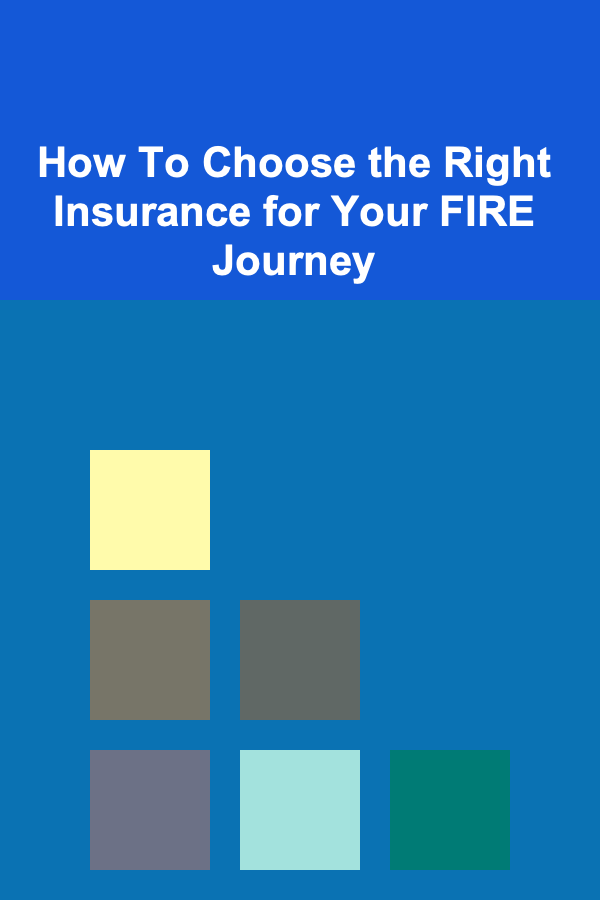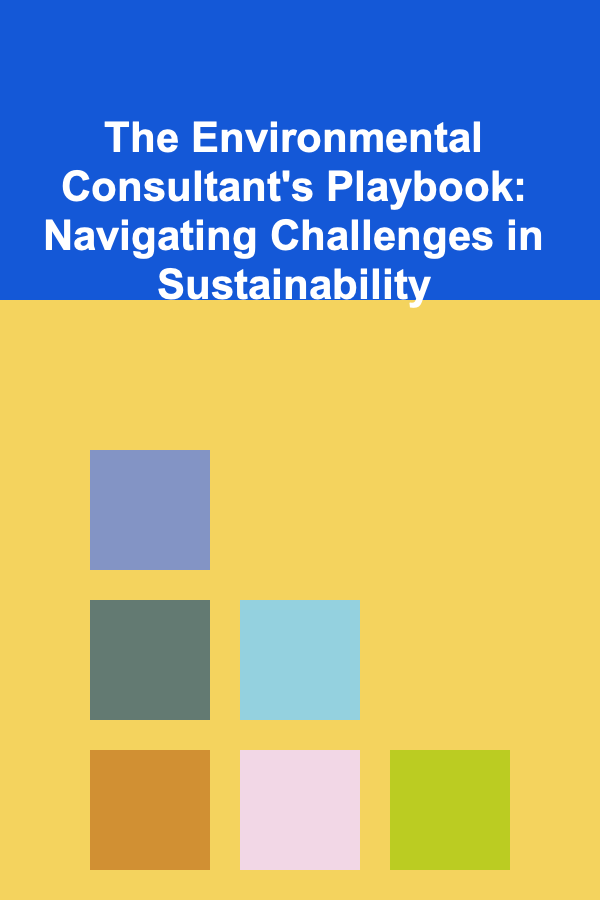
How To Choose the Right Insurance for Your FIRE Journey
ebook include PDF & Audio bundle (Micro Guide)
$12.99$7.99
Limited Time Offer! Order within the next:

Achieving financial independence and retiring early (FIRE) is a goal that has captured the imagination of many. Whether it's the allure of more free time, the ability to pursue passions, or the freedom to travel, the FIRE movement promises a life free from the constraints of traditional work. However, as you journey toward financial independence, one critical aspect often overlooked is insurance. The right insurance coverage can protect you against unforeseen risks and ensure that your path to FIRE remains smooth and uninterrupted.
In this article, we will explore the types of insurance you should consider on your FIRE journey, how to assess your specific needs, and how to balance cost and coverage to protect your financial future. From health insurance to life and disability coverage, this guide will help you make informed decisions that align with your financial goals.
Why Insurance is Crucial for Your FIRE Journey
When pursuing FIRE, the goal is to build a financial portfolio that generates enough passive income to cover your living expenses without relying on active work. While achieving financial independence requires careful planning and disciplined saving, it also comes with risks. These risks could include unexpected health issues, accidents, or the loss of income due to disability or death.
Insurance is the safety net that mitigates these risks. Without the proper insurance coverage, a significant health event or accident could derail your entire FIRE plan, potentially forcing you to work longer than you planned or compromising your savings.
Moreover, as you transition into early retirement, your exposure to financial risks increases. You may no longer have employer-provided insurance or a steady paycheck to fall back on. Therefore, it is essential to have the right insurance in place to ensure that you stay financially secure throughout your journey.
The Key Types of Insurance for FIRE Seekers
1. Health Insurance
Health insurance is perhaps the most important type of coverage to consider when working toward FIRE. The cost of medical care in many countries is high, and a major illness or injury can quickly drain your savings if you're not adequately insured. For FIRE seekers, health insurance is a top priority, especially if you're planning to retire before becoming eligible for public health insurance programs (such as Medicare in the U.S.).
Things to consider:
- Current Health Status: If you're young and healthy, you may be able to get by with a high-deductible plan or a health savings account (HSA) until you're eligible for Medicare or other government programs. However, if you have pre-existing conditions or anticipate higher medical costs, you'll need more comprehensive coverage.
- Employer-Provided Health Insurance: Many people rely on their employer's health insurance plan. If you're planning to retire early, you may lose access to this benefit. If you are within a few years of FIRE, you may want to consider alternatives such as the Affordable Care Act (ACA) marketplaces or private insurance plans.
- Health Savings Accounts (HSAs): If available, HSAs are a tax-advantaged way to save for future healthcare costs. They allow you to contribute pre-tax dollars that can grow tax-free and be withdrawn for qualified medical expenses. If you plan to retire early, an HSA can be a powerful tool to offset healthcare expenses.
- Health Insurance Options After FIRE: Depending on your country and its healthcare system, you may need to purchase private insurance until you qualify for national programs like Medicare. COBRA (in the U.S.) can also extend your employer's health insurance for a limited period, but it is often costly.
2. Life Insurance
Life insurance is designed to provide financial protection for your loved ones in the event of your death. While you may not immediately think about life insurance when pursuing FIRE, it can be an essential component, particularly if you have dependents or significant debts.
Things to consider:
- Term Life Insurance vs. Whole Life Insurance: Term life insurance provides coverage for a set period (e.g., 10, 20, or 30 years) and is generally more affordable. Whole life insurance provides coverage for your entire life, but it is significantly more expensive. For most FIRE seekers, term life insurance is more than adequate.
- Dependents: If you have a spouse, children, or other dependents who rely on your income, life insurance ensures they are financially supported in case of your untimely death. This can include covering everyday living expenses, outstanding debts, and future needs such as education.
- Debt and Financial Obligations: If you have significant debts (e.g., mortgage, student loans, or business loans), life insurance can help prevent your family from being burdened by these financial obligations after your passing.
- Income Replacement: If you're still working and generating active income, life insurance can replace the income that would otherwise be lost if you were no longer around. Once you achieve FIRE, the need for life insurance decreases since your passive income and accumulated wealth can take over.
3. Disability Insurance
Disability insurance provides income replacement if you become unable to work due to an illness or injury. As you strive for financial independence, one risk to consider is the possibility of losing the ability to generate income. Even if you have sufficient savings and investments, a long-term disability can significantly impact your financial plans.
Things to consider:
- Short-Term vs. Long-Term Disability Insurance: Short-term disability insurance typically provides coverage for a few months to a year, whereas long-term disability insurance offers protection for several years or even until retirement age. Depending on your career and lifestyle, you may need one or both types.
- Income Replacement Percentage: Disability insurance typically replaces 60-80% of your income, depending on the policy. For FIRE seekers, this percentage should be enough to cover essential expenses, but it might not fully replace a higher-income lifestyle.
- Self-Insuring: If you're on track to accumulate enough assets to generate passive income, you may choose to self-insure against disability. This is a risky approach, as long-term disabilities can drain savings rapidly, but for some, it may be a viable option if their FIRE plans are well underway.
4. Property and Casualty Insurance
While health, life, and disability insurance cover personal and family risks, property and casualty insurance protects your physical assets. This includes home insurance, renters insurance, and auto insurance. If you're planning to retire early, especially if you're downsizing or changing living arrangements, it's important to reassess your property and casualty coverage.
Things to consider:
- Homeowners Insurance: If you own a home, homeowners insurance is a must. It covers your property in case of theft, fire, or natural disaster. If you're selling your home to downsize or rent, you'll need to update your policy accordingly.
- Renters Insurance: If you decide to rent instead of owning property after FIRE, renters insurance can protect your personal belongings in case of theft, fire, or other damages.
- Auto Insurance: If you're planning to retire early and live a more mobile lifestyle (e.g., RV living, frequent travel), you may need to adjust your auto insurance policy to account for the changes in your living situation.
5. Long-Term Care Insurance
As you age, the need for long-term care may become a reality. Long-term care insurance helps cover the cost of services like nursing home care, in-home care, or assisted living. While this type of insurance is often overlooked, it can be a vital part of a comprehensive FIRE plan.
Things to consider:
- Age and Health: Long-term care insurance premiums tend to increase with age, so it's better to purchase this insurance earlier in life. If you're planning for early retirement, consider buying it before you leave the workforce, as your health could change over time.
- Self-Insuring: Some FIRE followers choose to self-insure long-term care needs by building up a large enough portfolio to cover future care costs. This approach is only feasible if you have substantial wealth and are comfortable with the risk.
- Cost of Care: Long-term care can be extremely expensive, and many people underestimate the costs involved. Depending on where you live, nursing home care can cost thousands of dollars per month, making long-term care insurance an important consideration.
Balancing Insurance Costs with Your FIRE Goals
One of the challenges of selecting the right insurance is balancing the premiums with your FIRE goals. Insurance can be costly, especially when you're trying to reduce expenses and accumulate wealth for early retirement. Here's how to balance the need for coverage with the goal of financial independence:
- Prioritize Needs Over Wants: Focus on the insurance that protects you from the most significant risks, such as health, life, and disability coverage. You can always adjust your coverage as your financial situation changes.
- Review Your Coverage Regularly: As you approach FIRE, your insurance needs may change. Regularly review your policies to ensure you're not paying for unnecessary coverage or missing critical areas of protection.
- Shop Around for Better Deals: Compare quotes from multiple insurance providers to find the best rates. Don't hesitate to negotiate for better premiums or adjust your coverage limits to match your evolving needs.
- Use Your Portfolio as a Safety Net: As you accumulate wealth for FIRE, consider using your investments as a form of self-insurance. This can help you reduce insurance premiums over time.
Conclusion
The path to financial independence and early retirement is filled with careful planning and strategic decision-making. Insurance is a critical part of that plan, as it helps protect you against the risks that could undermine your FIRE goals. By understanding the different types of insurance available and how they align with your financial journey, you can ensure that your path to FIRE remains secure and achievable.
As you move forward, keep in mind that insurance is not a one-size-fits-all solution. Your needs will evolve as you approach FIRE, and the right insurance coverage will provide you with peace of mind, knowing that you're well-protected no matter what challenges lie ahead.

How to Conduct a Regular Office Clean-Up Day
Read More
How to Create a Digital Library for Your Music Collection
Read More
How to Light Your Home for Productivity and Comfort
Read More
How to Plan for Financial Independence Early in Life
Read More
How to Set Up a DIY Family Bowling Alley in Your Garage
Read More
The Environmental Consultant's Playbook: Navigating Challenges in Sustainability
Read MoreOther Products

How to Conduct a Regular Office Clean-Up Day
Read More
How to Create a Digital Library for Your Music Collection
Read More
How to Light Your Home for Productivity and Comfort
Read More
How to Plan for Financial Independence Early in Life
Read More
How to Set Up a DIY Family Bowling Alley in Your Garage
Read More